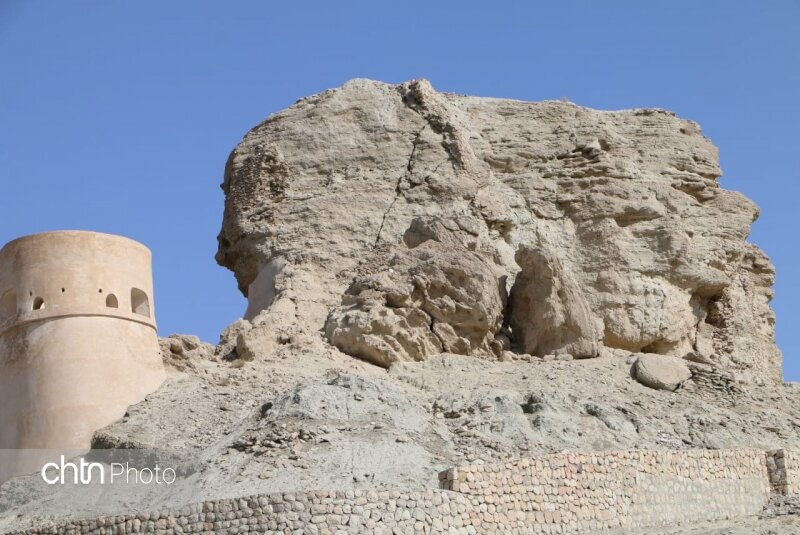Quake damages ancient castle in southern Iran

TEHRAN – The historical Fin Castle in southern Hormozgan province has been damaged due to an earthquake of a magnitude of 6.4 on the Richter scale that occurred on Sunday.
Following the powerful earthquake on Sunday and its aftershocks on Monday, parts of the castle, as well as the tower and the rock upon which the structure stands have been damaged, the provincial tourism chief Sohrab Banavand, announced on Wednesday.
The cultural heritage experts estimated the damage to this monument to be 12 billion rials (about $286,000 at the official exchange rate of 42,000 rials per dollar), the official added.
Based on potteries previously discovered at the site, Fin Castle can be dated to the medieval Islamic period, but it was in use until the Qajar-era (1789-1925), he explained.
Due to the severity of the earthquake and the significance of historical buildings, teams of experts are still on standby to inspect any possible harm to historical sites of the province, he noted.
The castle, which probably had a military function at the time of construction, was listed as a national heritage in 2002.
Two people are confirmed dead and three injured, after the earthquake occurred at a depth of 15 kilometers and was felt in the neighboring province of Kerman and Qeshm Island in the Persian Gulf.
In rural areas of Fin, several houses have been damaged. There were also reports of power and telecommunication outages in some parts of Hormozgan.
According to regional media, the force of the quake was so strong that tremors measuring 2.3 on the Richter scale could be felt across the United Arab Emirates and Saudi Arabia.
From very early history to modern times, defensive walls have often been necessary for cities to survive in an ever-changing world of invasion and conquest.
Fortifications in antiquity were designed primarily to defeat attempts at the escalade, and to the defense of territories in warfare, and were also used to solidify rule in a region during peacetime.
Uruk in ancient Sumer (Mesopotamia) is one of the world’s oldest known walled cities. The Ancient Egyptians also built fortresses on the frontiers of the Nile Valley to protect against invaders from neighboring territories.
Many of the fortifications of the ancient world were built with mud brick, often leaving them no more than mounds of dirt for today’s archaeologists.
Known as the province of islands, Hormozgan province is located on the northern coasts of the Persian Gulf. It embraces scenic islands among which Kish, Hormuz, Hengam, and Qeshm are the most beautiful ones and top tourist destinations in southern Iran.
Over the past couple of decades, the coral Kish Island has become a beach resort where visitors can swim, shop, and sample a laid-back and relatively liberated local lifestyle. It is home to free-trade-zone status, with ever-growing hotels, shopping centers, apartment blocks, and retail complexes.
Hormuz, which is mostly barren and hilly, is situated some eight kilometers off the coast on the Strait of Hormuz, which attracts many tourists by its colorful mountains, silver sand shores, and great local people.
Hengam Island has scenery rocky shores, serene sunset, and kind natives, which can attract travelers who enjoy a relaxing trip by spending time on this tranquil island.
Qeshm Island is a heaven for eco-tourists as it embraces wide-ranging attractions such as the Hara marine forests and about 60 villages dotted mostly across its rocky coastlines. The island also features geologically eye-catching canyons, hills, caves, and valleys, most of which are protected as part of the UNESCO-tagged Qeshm Island Geopark, itself a haven for nature-lovers.
ABU/AFM
Leave a Comment